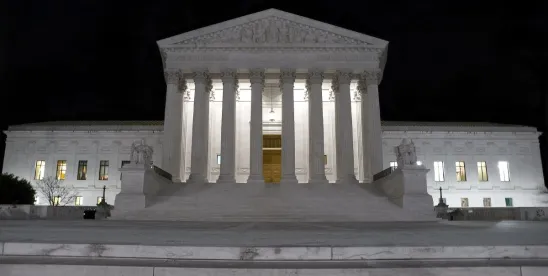In a unanimous 9-0 decision issued April 17, 2024, the U.S. Supreme Court held that an employee bringing a Title VII claim based on a job transfer must show that the transfer brought about some harm with respect to an identifiable term or condition of employment, but that harm need not be significant.
In Muldrow v. City of St. Louis, Missouri et al., petitioner Sergeant Jatonya Clayborn Muldrow contended that the St. Louis Police Department transferred her from her job as a plainclothes officer in its specialized Intelligence Division to another job as a uniformed officer in the department against her wishes so the new commander of the Intelligence Division could replace her with a male officer.
Muldrow sued for violation of Title VII, arguing that the City discriminated against her based on her sex with respect to the terms or conditions of her employment by ousting her from the Intelligence Division. The district court granted summary judgment in favor of the City and the Eighth Circuit affirmed that ruling on the grounds that Muldrow needed to but could not show that the transfer was a significant change in working conditions that caused her a materially significant employment disadvantage. Muldrow could not meet this standard because she experienced no change in salary or rank as a result of the transfer and she continued to have a supervisory role. Based on these facts, the Eighth Circuit concluded that she experienced “only minor changes in working conditions.” Other courts have similarly required a Title VII plaintiff to show a significant disadvantage to challenge a transfer.
The question before the Supreme Court was whether employees challenging a transfer under Title VII must show that the harm is significant or otherwise exceeds some heightened bar. The Court concluded no such requirement exists. Justice Elena Kagan delivered the opinion of the Court, stating, “To make out a Title VII discrimination claim, a transferee must show some harm respecting an identifiable term or condition of employment. What the transferee does not have to show, according to the relevant text, is that the harm incurred was ‘significant.’ Or serious, or substantial, or any similar adjective suggesting that the disadvantage to the employee must exceed a heightened bar” (internal citation omitted). The Court concluded that to require a showing of “significance” adds words to the statute and imposes a new requirement on a Title VII claimant. Based on this analysis, the Court vacated the Eighth Circuit’s judgment and remanded the case for further proceedings.
The ruling means employees will not be required to prove a significant harm resulting from a transfer to prevail on claims of Title VII discrimination. The Court noted that its ruling “lowers the bar Title VII plaintiffs must meet” and “because it does so, many cases will come out differently.” Accordingly, this decision increases potential exposure for companies and may result in the filing of more actions related to employee transfers. Companies should analyze their employee transfer policies and procedures and prepare for a potential increase in Title VII litigation.




 />i
/>i

